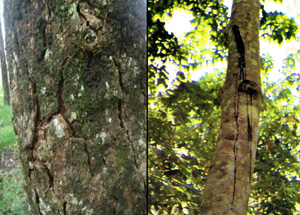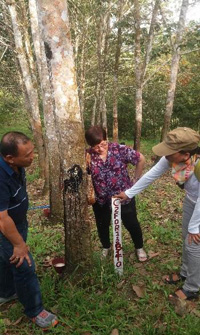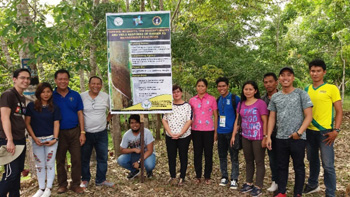 The Forestry and Environment Research Division (FERD) of the Department of Science and Technology-Philippine Council for Agriculture, Aquatic and Natural Resources Research and Development (DOST-PCAARRD) recently visited the rubber tree plantation in Zamboanga del Norte. The visit was part of the monitoring and evaluation activities of the project, “Etiology and Management Strategies for Tapping Panel Dryness and Stem Bleeding for rubber.”
The Forestry and Environment Research Division (FERD) of the Department of Science and Technology-Philippine Council for Agriculture, Aquatic and Natural Resources Research and Development (DOST-PCAARRD) recently visited the rubber tree plantation in Zamboanga del Norte. The visit was part of the monitoring and evaluation activities of the project, “Etiology and Management Strategies for Tapping Panel Dryness and Stem Bleeding for rubber.”
The project is being implemented by the joint research team led by Dr. Ana Liza Lopez of Jose Rizal Memorial State University (JSMMSU) Tampilisan, Zamboanga del Norte Campus and Engr. Roger O. Bagaforo of the Department of Agriculture Regional Field Office (DA RFO) Region 9. The project started in August 2016 with a duration of 2.5 years.
This research project aims to understand the causes of tapping panel dryness (TPD) and stem bleeding (SB) in rubber trees as well as to formulate strategies in managing these physiological disorders.
 TPD is also known as “brown bast” and is characterized by the drying of the tapping panel or rubber trunk, hence its name. Based from literatures, TPD usually occurs when rubber trees exceed its physiological capacity to produce latex in its regeneration. Trees suffering from TPD lead to a 15-20% decrease in latex yield.
TPD is also known as “brown bast” and is characterized by the drying of the tapping panel or rubber trunk, hence its name. Based from literatures, TPD usually occurs when rubber trees exceed its physiological capacity to produce latex in its regeneration. Trees suffering from TPD lead to a 15-20% decrease in latex yield.
The study also involves investigating the etiology of the drying of the rubber tree’s bark, which causes it to cease the production of latex. With this knowledge, the project can proceed in strategizing to avoid and manage the said disorder.
On the other hand, SB is characterized by excess production of latex, which causes it to just come out of the rubber tree’s bark. Eventually, fungus will start to dwell on the latex and become an entry point for the development of knob gall and other fungi-borne diseases.
Considerable reduction in yield of plantation is caused by these phenomena in rubber. With the result of the study, factors that induce the development of TPD and SB will be determined as basis for designing strategies for its management.

